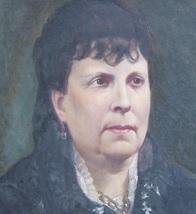The feminine role in the creation of Víctor Balaguer Museum in Spain is revealed by MED GAIMS project

During the XIXth Century, the dominant men’s culture in Spain has suppressed the active roles of women in public life and in institutional decision making. So, unhearing about their actions does not mean that women were not participating in the day-to-day cultural activities, supporting causes, or advising in important decisions. Unfortunately, what is not in the main records of history can be easily forgotten.
As a game experience is being played, a parallel research process takes place. We are utilizing this learning process to uncover feminine role in the creation of Víctor Balaguer Museum. We had several previous talks addressing the figure of Víctor Balaguer and his museum; one of the earliest museums in Spain. It is time to enlighten you on the role of several women in the creation of this foundation.
- Manuela Carbonell “Nola”: Víctor Balaguer’s wife, and a key character in his life. She always supported him in every step of his life, and participated in cultural and political events held in their house. Since he met her for the first time, Victor was deeply in love with her. He even ended his political life after her death.
- Emilia Serrano, Baroness of Wilson: She donated objects to the Víctor’s Balaguer Foundation from her collection during her trips to South Africa.
- Visitació Ubach: She was a painter apprentice of Francesc Miralles and she donated several paintings to the Museum. Unfortunately, many of her canvases have been attributed to her master, so it is difficult to identify them today.
- Dolors Monserdà de Macià: She was a writer who participated in intellectual meetings in her own house with such well-known members as Víctor Balaguer, Josep Anselm Clavé, Milà i Fontanals, and Narcís Monturiol, among others.
- The sisters Rosell Capdevila: They were collectors of cultural heritage and teachers and translators of esperanto. They became very active members of the cultural life in the city. They collected objects, engravings, and stamps and helped to create a recording of the national cultural heritage.
These are some examples of women that played an important part in the Victor’s Balaguer Foundation and it actually requires a deep research to know about them. Thanks to the gamified experience in the Museum Víctor Balaguer: Surge et Ambula, all these female characters exist in the game storytelling and every player going through the gamified experience will learn about them. The picture depicts Manuela Carbonell “Nola” (1824-1881)









